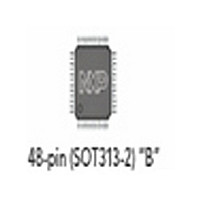OQ2538HP NXP Semiconductors, OQ2538HP Datasheet - Page 6

OQ2538HP
Manufacturer Part Number
OQ2538HP
Description
Manufacturer
NXP Semiconductors
Datasheet
1.OQ2538HP.pdf
(24 pages)
Specifications of OQ2538HP
Operating Temperature (min)
-40C
Operating Temperature (max)
85C
Operating Temperature Classification
Industrial
Mounting
Surface Mount
Lead Free Status / RoHS Status
Supplier Unconfirmed
Available stocks
Company
Part Number
Manufacturer
Quantity
Price
Part Number:
OQ2538HP
Manufacturer:
PHILIPS/飞利浦
Quantity:
20 000
Philips Semiconductors
FUNCTIONAL DESCRIPTION
The OQ2538HP is comprised of four DC-coupled amplifier
stages along with additional circuitry for offset
compensation and level detection.
The first amplifier stage contains a modified
Cherry/Hooper amplifying cell with high gain
(approximately 20 dB) and a wide bandwidth. Special
attention is paid to minimizing the equivalent input noise at
this stage, thus reducing the overall noise level. Additional
feedback is applied at the second and third stages,
improving isolation and reducing the gain to 14 dB per
stage. The last stage is an output buffer, a unity gain
amplifier, with an output impedance of 100 .
The total gain of the OQ2538HP amounts to 48.5 dB, thus
providing a constant CML-compatible output signal over a
wide input signal range.
Two rectifier circuits are used to measure the input signal
level. Two separate RF preamplifiers are used to generate
the voltage gain needed to obtain a suitable rectifier output
voltage. For rectifier A the gain is approximately 18 dB, for
rectifier B it is about 14 dB. The output of rectifier A can be
used for AGC at the preamplifier stage in front of the
OQ2538HP. The output of rectifier B can be used for LOS
detection. There is a linear relationship between the
rectifier output voltage and the input signal level provided
the amplifiers are not saturated.
Because the four gain stages are DC-coupled and provide
a high overall gain, the effect of the input offset can be
considerable. The OQ2538HP features an internal offset
compensation circuit for eliminating the input offset.
The bandwidth of the offset control loop is determined by
an external capacitor.
COFF and COFFQ offset compensation
Automatic offset compensation eliminates the input offset
of the OQ2538HP. This offset cancellation influences the
low frequency gain of the amplifier stages. With a
capacitance of 100 nF between COFF and COFFQ the
loop bandwidth will be less than 1.5 kHz, small enough to
have no influence on amplifier gain over the frequencies of
interest. If the capacitor was omitted, the loop bandwidth
would be greater than 30 MHz, which would influence the
input signal gain. The loop bandwidth can be calculated
from the following formula:
where C
and COFFQ.
1998 Oct 14
f
loop
SDH/SONET STM16/OC48 main amplifiers
=
----------------------------------------------- -
2
ext
is the capacitance connected between COFF
1250
1
C
ext
(1)
6
REF and CAPA band gap output and decoupling
capacitance
To reduce band gap noise levels, a 1 nF decoupling
capacitor on CAPA is recommended. Since the band gap
is referenced to the negative power supply, the decoupling
capacitor should be connected between CAPA and V
The band gap voltage is present on pin REF for test
purposes only. It is not intended to serve as an external
reference.
RF input and output connections
Striplines, or microstrips, with an odd mode characteristic
impedance of Z
differential RF connections on the PCB. This applies to
both the input signal pair IN and INQ and to the output
signal pair OUT and OUTQ. The two lines in each pair
should have the same length.
RF input matching circuit
The input circuit for pins IN and INQ contains internal
100
common mode 6 pF capacitor. The topology is depicted in
Fig.3.
handbook, halfpage
resistors decoupled to ground via an internal
IN
o(odd)
100
Fig.3 RF input topology.
OQ2538HP; OQ2538U
= 50
must be used for the
6 pF
Product specification
100
GND
MGM114
INQ
EE
.
















